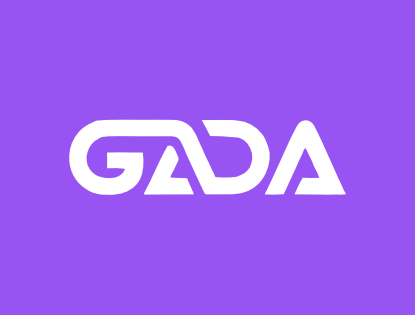THIS IS STILL ON WEIGHT LOSS.
1. Nutrition: The Foundation of Fat Loss
Why it matters: You can’t out-train a poor diet. Around 70–80% of weight loss happens in the kitchen.
Actionable Tips:
Calorie Deficit: Your body needs fewer calories than it burns. Start by reducing your intake by 300–500 calories/day. This results in about 0.5–1kg of weight loss per week — a healthy pace.
What to Eat:
Proteins (essential for fat loss & muscle maintenance): Chicken breast, fish, tofu, Greek yogurt, eggs, lentils.
Complex Carbs (for energy, fiber): Brown rice, quinoa, oats, sweet potatoes.
Healthy Fats (keep you full): Avocados, nuts, seeds, olive oil.
Vegetables & Fruits: High in fiber and nutrients, low in calories.
What to Limit:
Sugary drinks (soda, energy drinks, too much fruit juice)
Processed snacks (chips, candy, cookies)
Refined carbs (white bread, white rice, pastries)
Meal Tips:
Prep meals in advance.
Use smaller plates to control portions.
Eat slowly — your brain takes 20 minutes to register fullness.
2. Exercise: Burn Calories & Build Muscle
Why it matters: Exercise helps boost metabolism, preserve muscle, and improve overall health.
Workout Strategy:
Cardio (3–5x/week): Brisk walking, jogging, cycling, swimming, or dancing.
Start with 30 minutes a day — even 10-minute chunks work.
Strength Training (2–4x/week):
Focus on big compound moves like squats, lunges, push-ups, planks.
Strength workouts burn calories during and after the workout (afterburn effect).
No gym? Bodyweight exercises at home work too.
Active Lifestyle (daily):
Take stairs instead of elevators.
Walk after meals.
Set a step goal (start with 6k, aim for 10k steps/day).
3. Sleep, Stress, & Mindset
Sleep:
7–9 hours/night.
Poor sleep disrupts hormones like ghrelin (hunger) and leptin (fullness).
Stress:
Chronic stress = more cortisol = increased belly fat + cravings.
Try meditation, deep breathing, journaling, nature walks.
4. Track Your Progress (but not just the scale)
Take photos every 2 weeks.
Measure waist, hips, thighs.
Track energy levels, sleep, strength gains.
Use the scale only as one data point — don’t let it rule your mood.
5. Keep It Sustainable
Start with habits you can stick to long-term.
Don’t crash diet or eliminate entire food groups unless needed for medical reasons.
Allow room for occasional treats — balance, not perfection.
1. Nutrition: The Foundation of Fat Loss
Why it matters: You can’t out-train a poor diet. Around 70–80% of weight loss happens in the kitchen.
Actionable Tips:
Calorie Deficit: Your body needs fewer calories than it burns. Start by reducing your intake by 300–500 calories/day. This results in about 0.5–1kg of weight loss per week — a healthy pace.
What to Eat:
Proteins (essential for fat loss & muscle maintenance): Chicken breast, fish, tofu, Greek yogurt, eggs, lentils.
Complex Carbs (for energy, fiber): Brown rice, quinoa, oats, sweet potatoes.
Healthy Fats (keep you full): Avocados, nuts, seeds, olive oil.
Vegetables & Fruits: High in fiber and nutrients, low in calories.
What to Limit:
Sugary drinks (soda, energy drinks, too much fruit juice)
Processed snacks (chips, candy, cookies)
Refined carbs (white bread, white rice, pastries)
Meal Tips:
Prep meals in advance.
Use smaller plates to control portions.
Eat slowly — your brain takes 20 minutes to register fullness.
2. Exercise: Burn Calories & Build Muscle
Why it matters: Exercise helps boost metabolism, preserve muscle, and improve overall health.
Workout Strategy:
Cardio (3–5x/week): Brisk walking, jogging, cycling, swimming, or dancing.
Start with 30 minutes a day — even 10-minute chunks work.
Strength Training (2–4x/week):
Focus on big compound moves like squats, lunges, push-ups, planks.
Strength workouts burn calories during and after the workout (afterburn effect).
No gym? Bodyweight exercises at home work too.
Active Lifestyle (daily):
Take stairs instead of elevators.
Walk after meals.
Set a step goal (start with 6k, aim for 10k steps/day).
3. Sleep, Stress, & Mindset
Sleep:
7–9 hours/night.
Poor sleep disrupts hormones like ghrelin (hunger) and leptin (fullness).
Stress:
Chronic stress = more cortisol = increased belly fat + cravings.
Try meditation, deep breathing, journaling, nature walks.
4. Track Your Progress (but not just the scale)
Take photos every 2 weeks.
Measure waist, hips, thighs.
Track energy levels, sleep, strength gains.
Use the scale only as one data point — don’t let it rule your mood.
5. Keep It Sustainable
Start with habits you can stick to long-term.
Don’t crash diet or eliminate entire food groups unless needed for medical reasons.
Allow room for occasional treats — balance, not perfection.
THIS IS STILL ON WEIGHT LOSS.
1. Nutrition: The Foundation of Fat Loss
Why it matters: You can’t out-train a poor diet. Around 70–80% of weight loss happens in the kitchen.
Actionable Tips:
Calorie Deficit: Your body needs fewer calories than it burns. Start by reducing your intake by 300–500 calories/day. This results in about 0.5–1kg of weight loss per week — a healthy pace.
What to Eat:
Proteins (essential for fat loss & muscle maintenance): Chicken breast, fish, tofu, Greek yogurt, eggs, lentils.
Complex Carbs (for energy, fiber): Brown rice, quinoa, oats, sweet potatoes.
Healthy Fats (keep you full): Avocados, nuts, seeds, olive oil.
Vegetables & Fruits: High in fiber and nutrients, low in calories.
What to Limit:
Sugary drinks (soda, energy drinks, too much fruit juice)
Processed snacks (chips, candy, cookies)
Refined carbs (white bread, white rice, pastries)
Meal Tips:
Prep meals in advance.
Use smaller plates to control portions.
Eat slowly — your brain takes 20 minutes to register fullness.
2. Exercise: Burn Calories & Build Muscle
Why it matters: Exercise helps boost metabolism, preserve muscle, and improve overall health.
Workout Strategy:
Cardio (3–5x/week): Brisk walking, jogging, cycling, swimming, or dancing.
Start with 30 minutes a day — even 10-minute chunks work.
Strength Training (2–4x/week):
Focus on big compound moves like squats, lunges, push-ups, planks.
Strength workouts burn calories during and after the workout (afterburn effect).
No gym? Bodyweight exercises at home work too.
Active Lifestyle (daily):
Take stairs instead of elevators.
Walk after meals.
Set a step goal (start with 6k, aim for 10k steps/day).
3. Sleep, Stress, & Mindset
Sleep:
7–9 hours/night.
Poor sleep disrupts hormones like ghrelin (hunger) and leptin (fullness).
Stress:
Chronic stress = more cortisol = increased belly fat + cravings.
Try meditation, deep breathing, journaling, nature walks.
4. Track Your Progress (but not just the scale)
Take photos every 2 weeks.
Measure waist, hips, thighs.
Track energy levels, sleep, strength gains.
Use the scale only as one data point — don’t let it rule your mood.
5. Keep It Sustainable
Start with habits you can stick to long-term.
Don’t crash diet or eliminate entire food groups unless needed for medical reasons.
Allow room for occasional treats — balance, not perfection.
0 Comments
0 Shares
465 Views
0 Reviews


